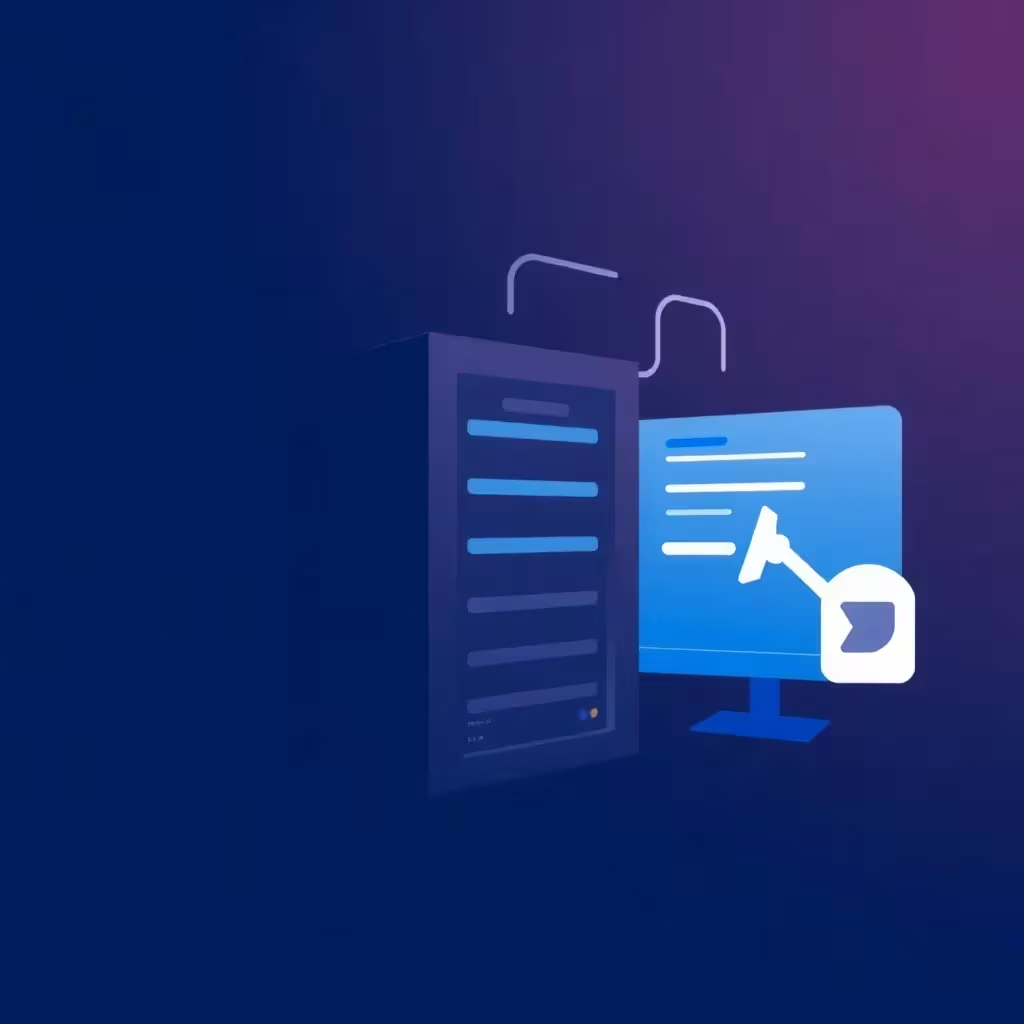Introduction
In the digital era, where businesses and individuals are increasingly reliant on web presences, cybersecurity in the web hosting sector is becoming immensely important. The threat landscape is constantly evolving and cybercriminals are using increasingly sophisticated methods to exploit vulnerabilities in websites and hosting infrastructures. This article looks at the main threats to web hosting cybersecurity and outlines effective protective measures that website operators and hosting providers can implement to protect their digital assets.
Threats to cyber security in web hosting
Malware and viruses
Malware and viruses are one of the most common and dangerous threats in the web hosting sector. These malicious programs can sneak into web servers, steal sensitive data, deface websites or even paralyze entire systems. Trojans, which disguise themselves as legitimate software but carry out malicious activities in the background, are particularly insidious. In addition to classic viruses, there is also specialized malware such as ransomware, which encrypts data and demands a ransom from its victims.
Distributed Denial-of-Service (DDoS) attacks
DDoS attacks aim to overload websites or entire servers with a flood of requests, making them inaccessible. This type of attack can cause considerable downtime and lead to loss of revenue and reputational damage. Websites with high data traffic or those that offer critical services are particularly at risk. Modern DDoS attacks often use botnets to simulate data traffic from numerous sources, which makes defense considerably more difficult.
SQL injection
In SQL injection attacks, hackers attempt to inject malicious SQL code into input fields of web applications. The aim is to gain unauthorized access to the underlying database. This can lead to the manipulation, theft or deletion of sensitive data. Websites with inadequately secured databases are particularly susceptible to this type of attack. To prevent SQL injection, prepared statements and parameter bindings should be used.
Cross-site scripting (XSS)
XSS attacks exploit vulnerabilities in web applications to insert malicious code into the pages displayed by the user. This can lead to attackers stealing cookies, taking over user accounts or even remotely controlling the victim's browser. Dynamic websites with insufficient input validation are particularly vulnerable to XSS attacks. An effective countermeasure is the implementation of Content Security Policies (CSP).
Phishing and social engineering
Phishing attacks aim to trick users into disclosing sensitive information such as passwords or credit card details. In the context of web hosting, such attacks can lead to cybercriminals gaining access to hosting accounts and misusing them for malicious purposes. Social engineering tactics are often used in conjunction with phishing to increase the credibility of the attacks. User awareness and the implementation of security protocols are crucial here.
Brute force attacks
In brute force attacks, hackers try to gain access to protected areas such as admin panels or FTP servers by systematically trying out different combinations. This type of attack can be particularly dangerous if weak or frequently used passwords are in use. The use of strong, unique passwords and the implementation of two-factor authentication (2FA) can significantly reduce the risk.
Zero-day exploits
Zero-day exploits are attacks that exploit previously unknown vulnerabilities in software or systems. As no patches are yet available for these vulnerabilities, they can be particularly dangerous. Hosting providers and website operators must therefore always be vigilant and regularly check their systems for signs of compromise. The use of intrusion detection systems (IDS) and regular security updates are essential here.
Protective measures for increased cyber security in web hosting
Regular software updates and patch management
One of the most important measures for improving cyber security in web hosting is the consistent implementation of software updates and patch management. This applies not only to the server's operating system, but also to all installed applications, content management systems (CMS) and plugins. Regular updates close known security gaps and reduce the attack surface for cyber criminals. Automated update tools can simplify the process and ensure that no important updates are missed.
Implementation of a robust firewall
A powerful firewall is essential for filtering unwanted data traffic and fending off potential attacks. Web application firewalls (WAF) are particularly effective as they are specifically tailored to the needs of web applications and can detect and block attacks such as SQL injection or XSS. In addition to WAFs, network firewalls should also be used to ensure a multi-layered defense.
Use of SSL/TLS encryption
The use of SSL/TLS certificates to encrypt data transmission between server and client is now standard and should be implemented for all websites. This not only protects sensitive data from interception, but also improves the ranking in search engines and strengthens the trust of visitors. HTTPS is also an important factor for SEO optimization and can have a positive impact on the user experience.
Strong authentication mechanisms
The implementation of strong authentication mechanisms is crucial to prevent unauthorized access. This includes the use of complex passwords, which should be changed regularly, as well as the introduction of two-factor authentication (2FA) for all critical access points such as admin panels or FTP accounts. In addition, single sign-on (SSO) and biometric authentication methods should be considered to further increase security.
Regular backups and disaster recovery plans
Regular backups of all important data and configurations are essential in order to be able to restore them quickly in the event of a successful attack or technical failure. These backups should be stored in a secure location separate from the production system. In addition, disaster recovery plans should be developed and regularly tested in order to be able to react quickly and effectively in the event of an emergency. Automated backup solutions can ensure that no important data is lost.
Implementation of intrusion detection and prevention systems (IDS/IPS)
IDS/IPS systems monitor network traffic in real time for suspicious activity and can automatically initiate countermeasures. These systems are particularly effective in detecting and defending against DDoS attacks, brute force attempts and other network-based threats. A combination of hardware and software-based IDS/IPS can ensure comprehensive security monitoring.
Training and sensitization of employees
As many security incidents are due to human error, continuous training and awareness-raising for employees is crucial. This includes topics such as secure password handling, recognizing phishing attempts and adhering to cybersecurity best practices. Regular training and security drills can increase employee awareness and reduce the risk of mistakes.
Use of Content Security Policies (CSP)
Content security policies enable website operators to define exactly which resources may be loaded from which sources. This can make XSS attacks and other forms of content injection considerably more difficult. Although the implementation of a CSP requires some effort, it offers a considerable security gain. CSP can also help to minimize the risk of data leaks and ensure the integrity of the web application.
Regular security audits and penetration tests
Regular security audits and penetration tests help to identify vulnerabilities in the hosting infrastructure and hosted websites before they can be exploited by attackers. These tests should be carried out both internally and by external security experts in order to obtain as comprehensive an assessment as possible. The results of these audits should be used to make continuous improvements to security measures.
Implementation of least privilege principles
The principle of least privilege states that users and processes should only be given the minimum necessary rights to perform their tasks. This significantly reduces the potential damage in the event of a compromise. In practice, this means, for example, carefully managing user rights and restricting root access to what is absolutely necessary. Regular checks of user rights can ensure that no unnecessary authorizations are assigned.
Monitoring and log analysis
The continuous monitoring of server logs and network activities is crucial in order to detect unusual activities at an early stage. Modern log management tools and SIEM (Security Information and Event Management) systems can help to filter out relevant security events from the mass of data and trigger alarms in the event of suspicious activities. Effective log analysis supports the rapid identification of and response to security incidents.
Secure configuration of databases
As databases are often at the heart of web applications and contain sensitive information, their secure configuration is of the utmost importance. This includes measures such as using strong authentication, restricting database rights, encrypting sensitive data and regularly checking and cleaning up database access. A well-configured database can effectively defend against many attack methods.
Use of web application security scanners
Automated web application security scanners can be used regularly to check websites for known security vulnerabilities. These tools simulate various attack vectors and can detect vulnerabilities in application logic, insecure configurations or outdated software components. The integration of these scanners into the development and maintenance process can enable the early detection and elimination of security problems.
Implementation of rate limiting
Rate limiting mechanisms can help minimize the impact of brute force attacks and certain forms of DDoS attacks. By limiting the number of requests that can be made from a single IP address or user account in a given period of time, it becomes more difficult for attackers to carry out automated attacks. Rate limiting is a simple but effective method of increasing the security of web applications.
Further strategies for improving cyber security in web hosting
Use of security plugins and extensions
Many content management systems (CMS) offer a variety of security plugins and extensions that provide additional layers of protection. For example, these plugins can add additional firewall functions, malware scanners or login security checks. Careful selection and regular updating of these plugins is crucial to avoid potential security vulnerabilities.
Segmentation of the network infrastructure
Segmenting the network infrastructure can help prevent the spread of attacks within the system. By dividing the network into different zones with different security levels, critical systems can be better protected. This reduces the risk that a successful attack on one part of the network can easily spread to other parts.
Regular review and update of security guidelines
Protective measures also include the regular review and updating of security guidelines. These policies should clearly define how security incidents are handled, what actions are taken in the event of an attack and how the continuous improvement of security measures is ensured. A well-documented security policy supports the entire organization in complying with security standards.
Cooperation with security service providers
Working with specialist security service providers can provide additional expertise and resources to improve cyber security. These service providers can conduct comprehensive security audits, offer customized security solutions and assist in defending against complex attacks. Outsourcing security functions can be a cost-effective solution for many companies to ensure high security standards.
Conclusion
Securing web hosting environments against cyber threats requires a holistic and proactive approach. By implementing the above protective measures, hosting providers and website owners can significantly reduce the risk of successful attacks. However, it is important to understand that cyber security is a continuous process that requires constant vigilance, regular reviews and adjustments to new threats.
At a time when cyberattacks are becoming increasingly sophisticated and frequent, it is crucial to invest in robust security measures. This not only protects your own assets, but also your data and the trust of your customers. Companies that take cyber security seriously and act proactively will benefit from an improved reputation, higher customer confidence and a more stable online presence in the long term.
Ultimately, cybersecurity in web hosting is a shared responsibility between hosting providers, website operators and end users. Only through the cooperation of all parties involved and the consistent implementation of proven security practices can a secure and trustworthy online environment be created.



